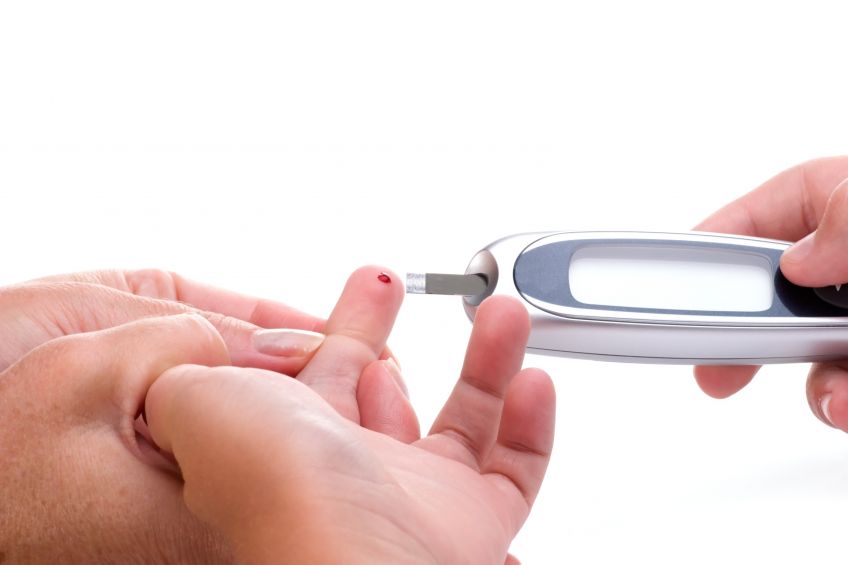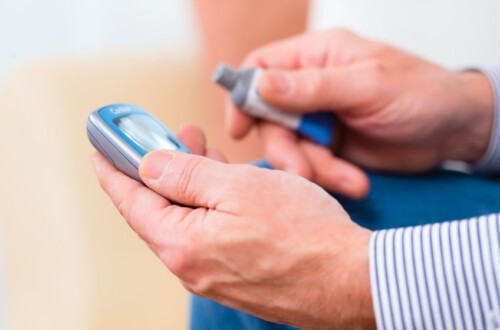 Having to repeat finger sticks because of human error (i.e., dirty hands) or meter failure due to a poor blood sample can be avoided by taking certain precautions. Here are tips to get it right the first time, and help you learn to test your blood sugar with less pain and hassle.
Having to repeat finger sticks because of human error (i.e., dirty hands) or meter failure due to a poor blood sample can be avoided by taking certain precautions. Here are tips to get it right the first time, and help you learn to test your blood sugar with less pain and hassle.
Tip #1:Â Make Sure Fingertips Are Clean and Dry
Although many doctors recommend alcohol pads for convenience they can dry out the fingertips making it harder to draw blood. Also, alcohol, if not totally dry, will prohibit the blood from “beading” so that it can be more easily applied to the test strip. Alcohol may also increase the stinging sensation when the finger is pricked.
It is fine to simply wash your hands with warm water and soap but be sure to thoroughly dry your hands after washing them. The idea behind hand cleanliness is to remove any foreign substances (food, juice, chemicals, dirt) that can pollute the blood sample and lead to false readings. Sterilization of the site with pure rubbing alcohol is not necessary (as long as you are changing lancets and not sharing your device with anyone) else because finger infections from lancets are rare.
Tip #2:Â Don’t Use Hand Sanitizers and Hand Wipes
Disposable hand wipes and sanitizers can pollute blood samples and produce false readings which may cause the meter to return an error message. Although many people use sanitary hand wipes and liquid sanitizers without complaint, the chemicals in some products may cause error messages.
If you are not near a sink, rinsing your hands thoroughly with plain bottled water addresses the real issue of ensuring that nothing on the hands will interfere with, or alter the results of blood glucose testing. While infections from finger sticks are rare you can further decrease the chances of infection by changing the lancet after each use and occasionally cleaning your lancing device by soaking it in rubbing alcohol for a few minutes and letting it air dry before using it again.
Tip #3:Â Don’t Prick Fingertip Pads
Try to avoid pricking the finger directly on the main part of the pad where there are the most nerve endings.  Pricking fingertip pads induces unnecessary pain and is not the best “bleed” site on the finger because the skin is thicker and there are fewer capillaries close to the surface.
Prick fingers on the sides, a little bit away from the nail bed (too close to the nail hurts!) Â The sides of the fingers have more blood vessels and fewer nerve endings than the pads or tips. Smaller fingers bleed better than larger, calloused ones, and the thumb often has the thickest skin making it the hardest digit to draw blood from. Using all the fingers and thumb are fine, but you may need to adjust the depth setting for fingers with calluses or thicker skin.
Tip #4:Â Change Lancets Frequently
Dull lancets tear the skin rather than pierce it. Change lancet needles after each use if you have really sensitive fingers, otherwise use them no more than two or three times. If you do not test each day, it is a good idea to change the needle with every use to ensure they are sterile.
Tip #5:Â Adjust the Depth Setting
Most lancing devices have an adjustable depth setting; if yours does not (and it hurts to use it) buy one that does. Start by trying to prick your finger on the lowest setting and increasing the depth one increment at a time. You may need to experiment a little and find that you have to use different depth settings for different fingers.
Tip #6:Â Change Lancing Devices or Glucose Meters
Lancets (the needle that is inserted into the lancing device) are not all the same — some pierce faster and more gently than others, which can cause less pain. Some lancing devices can take thinner gauge needles than other which can also cause less pain. The thinner the needle gauge, generally, the less pain there is when it pierces the skin.
Some blood glucose meters require a larger sampling of blood than others. The Freestyle series of meters are more expensive than generic brands, but pnly need a very tiny droplet of blood (currently, the Freestyle meters take the smallest amount of blood than any other meter on the market.)  The smaller the blood sample that is required, the lower the setting you can use on your lancing device.
Tip #7:Â Stopping the Blood Flow and Post Finger Stick Stinging
Sometimes finger pricks can bleed a lot, especially on tiny fingers, or the elderly who have thinner skin. Unless you have a clotting disorder (i.e., hemophilia) there is generally nothing to be concerned about, but fingers that bleed a lot may also sting. Avoid using rubbing alcohol which dries out skin and will cause additional irritation and stinging.  You can use an alcohol-free disposable hand cleaner to clean hands of blood and apply pressure if needed.
If bleeding concerns you is last more than a minute, gently apply pressure with a small gauze pad; cotton balls leave fuzzy residue and do not provide a good surface for applying even pressure.




